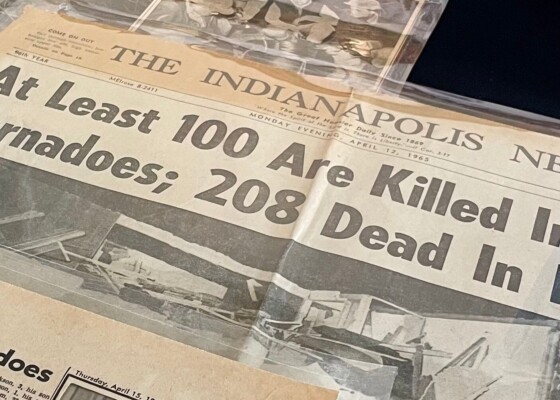Raintree County and “The Next Indiana”
February 16, 2016In his 1948 novel Raintree County, my father Ross Lockridge, Jr. unabashedly attempted to write the Great American Novel, not just the Great Hoosier Novel, but the original setting is, for the most part, Henry County,…
In his 1948 novel Raintree County, my father Ross Lockridge, Jr. unabashedly attempted to write the Great American Novel, not just the Great Hoosier Novel, but the original setting is, for the most part, Henry County, Indiana. The protagonist, John Wickliff Shawnessy, is modeled on my paternal great-grandfather, John Wesley Shockley of Straughn, Indiana. He spends a modest life as a Hoosier schoolmaster who writes poetry on the side as an idealist who quietly nurses the highest literary aspirations. But he is too mired in his own tragic past to write his way toward a visionary future, to write the epic of America.
In Raintree County, Lockridge attempted to write that future for him, as a literary prophet with a strong sense of nostalgia but with a mission also—to restore to American life its fading mythic sense of things, anchored in immediate and celebratory sensate experience. Finishing his novel just as World War II was coming to an end, Lockridge thought this mythic sense of things was greatly imperiled by commerce and industry, by the lack of what Matthew Arnold called “sweetness and light” and Northrop Frye “the myth of freedom.” As the best-selling novel in the early months of 1948, Raintree County seemed for a time to answer to a hunger in the populus for American meaning beyond the banalities of Main Street. Lockridge especially emphasized the values of the landscape and its mythic enhancements. How regain a sense of the miraculous and a reverence for the landscape when the ancient river gods are taking flight at the coming of the railroads? Shawnessy asks this kind of question again and again, and Raintree County has thus been called the “foremost American environmental novel.”
I feel that Raintree County mingles history with prophecy in a way full of implication for “The Next Indiana.” The “endlessly courageous dreamers” whom Ross Lockridge speaks of may not be found in our politicians—and politicians with the exception of Lincoln come off poorly in Raintree County. Rather, it is in the rank and file of ordinary Hoosiers where the extra-ordinary must be found as we take stock of our collective heritage, find the uses of the past, maintain our rivers and lakes, and work toward what Lockridge called “the gigantic labor by which the earth is rescued again and again from chaos and old night.”
I tell the story of my father in Shade of the Raintree: The Life and Death of Ross Lockridge, Jr (Viking, 1994), republished in 2014 by Indiana University Press with a new preface.
Learn more at www.raintreecounty.com, a website maintained by Ross Lockridge III.


